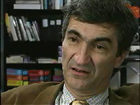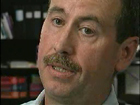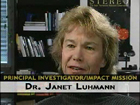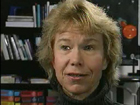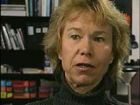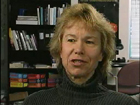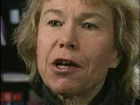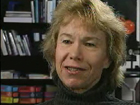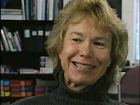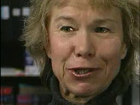STEREO/IMPACT Mission
Solar TErrestrial RElations Observatory (STEREO)
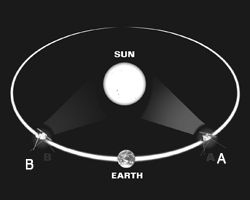 The Solar TErrestrial RElations Observatory (STEREO) mission is the third in a coordinated sequence of science missions within the Solar Terrestrial Probes (STP) Program detailed in NASA's 1994 Strategic Plan. The STP Program focuses on understanding how the changing Sun affects the solar system and life on Earth.
The Solar TErrestrial RElations Observatory (STEREO) mission is the third in a coordinated sequence of science missions within the Solar Terrestrial Probes (STP) Program detailed in NASA's 1994 Strategic Plan. The STP Program focuses on understanding how the changing Sun affects the solar system and life on Earth.
Click here for an animation of STEREO's orbit
(.mpg 16MB)
The principal objective of the Solar TErrestrial RElations Observatory (STEREO) is to understand the origin and consequences of Coronal Mass Ejections (CME's). CME's are the most energetic eruptions on the Sun. They are responsible for essentially all of the largest geomagnetic storms. In order to understand and forecast CME's, especially those traveling toward and past Earth, we need 3-Dimensional images of them and of the ambient solar corona and heliosphere. Achieving this perspective will require moving away from our customary Earth-bound lookout point. To provide the images for a stereo reconstruction of solar eruptions, one spacecraft will lead Earth and one will be lagging in its orbit about the Sun.
Specific science objectives are to:
- Understand the causes and mechanisms of CME initiation.
- Characterize the propagation of CMEs through the heliosphere.
- Discover the mechanisms and sites of solar energetic particle acceleration in the low corona and the interplanetary medium.
- Develop a three-dimensional, time-dependent model of the magnetic topology, temperature, density, and velocity structure of the ambient solar wind.
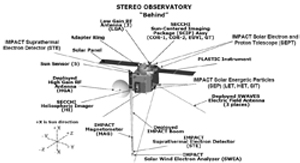
The STEREO observatory carries a complement of four scientific instruments (two instruments and two instrument suites, with a total of 13 instruments per observatory) as follows:
- Sun-Earth Connection Coronal and Heliospheric Investigation (SECCHI). (Naval Research Laboratory (NRL))
- In situ Measurements of Particles and CME Transients (IMPACT). (UCB and CalTech)
- PLAsma and SupraThermal Ion Composition (PLASTIC). (University of New Hampshire (UNH))
- STEREO/WAVES (S/WAVES). (University of Minnesota (UMN))
In-situ Measurements of Particles and CME Transients (IMPACT)
A suite of seven instruments that will sample the 3-D distribution of solar wind plasma electrons, the characteristics of the solar energetic particle (SEP) ions and electrons, and the local vector magnetic field. IMPACT will be one of the STEREO mission's four measurement packages whose principal objective is to understand the origin and consequences of Coronal Mass Ejections (CME's). CME's are the most energetic eruptions on the Sun. They are responsible for essentially all of the largest solar geomagnetic storms. In order to understand and forecast CME's, we need 3-Dimensional images of them and of the ambient solar corona and heliosphere. Achieving this perspective will require moving away from our customary Earth-bound lookout point. To provide the images for a stereo reconstruction of solar eruptions, one spacecraft will lead Earth and one will be lagging in its orbit about the Sun. Launch is scheduled for July 22nd to August 6th.
Riding a pillar of flame into the night sky, the twin STEREO observatories rocketed into space from Cape Canaveral Air Force Station in Florida at 8:52 p.m. EDT on Oct. 25, 2006.
A Boeing Delta II boosted the two spacecraft into orbit, where they will spend two years studying the Sun-Earth system. The mission is the first to take measurements of the and solar wind in 3-dimension, providing a new view that will improve our understanding of space weather and its impact on Earth.
STEREO/IMPACT 2004 Flyers
print version (4.89 MB, .pdf)
web version (1.14 MB, .pdf)
STEREO Booklet (3.05 MB, .pdf)
NASA has produced the following booklet about the STEREO mission, including the IMPACT instrument suite.
Sounds of Space
Hear observations of the and Sun-Earth connection converted into sounds! Note: The level of this page is high. Tutorials and lessons will be added to it over time to make it more accessible to a wider audience.
STEREO Mission's Involvement in Eclipse 2001
Space Weather: Physics and Forecasts
An article by Dr. Janet Luhmann featured as a cover page article in Physics World (http://physicsweb.org/toc), July 2000. The article explains what space scientists are learning about the phenomena underlying magnetic storms.
STEREO Videos LINK THESE VIDEOS
|
| |
|
| |


